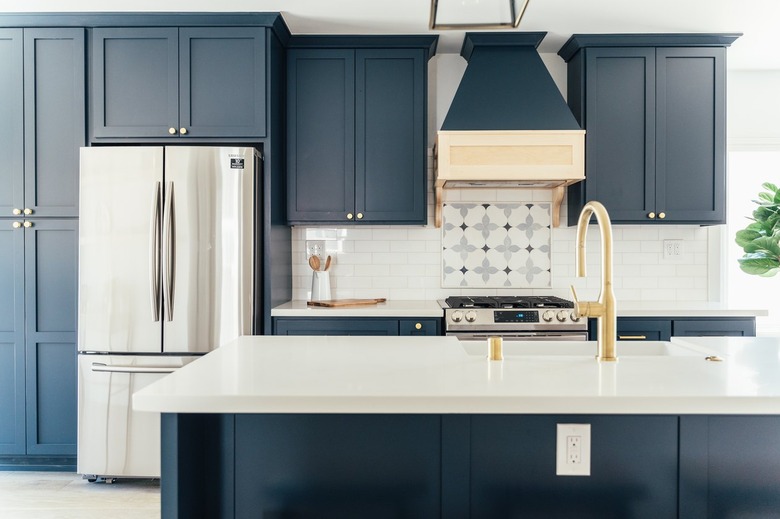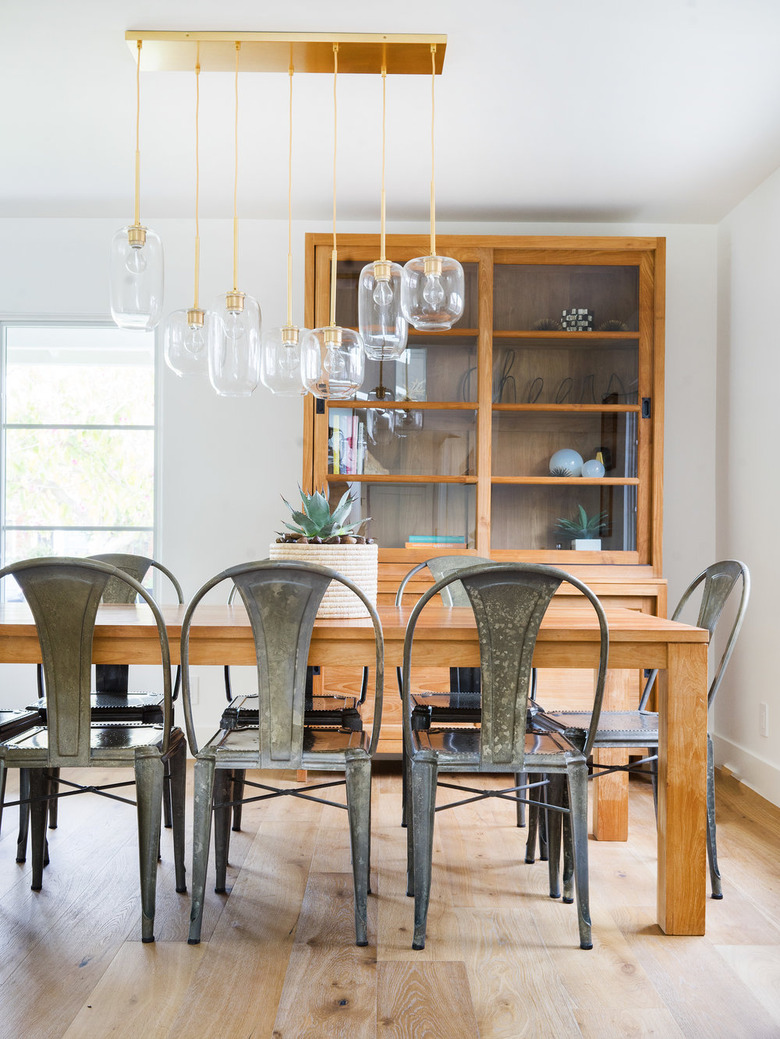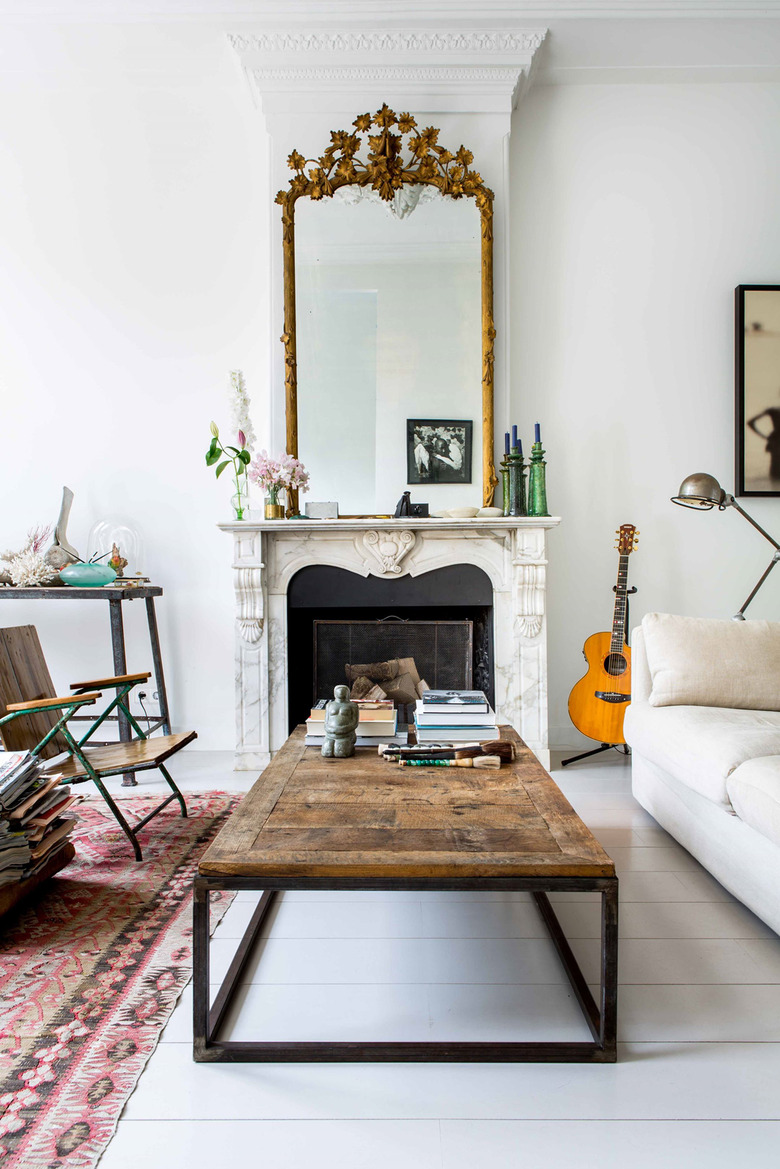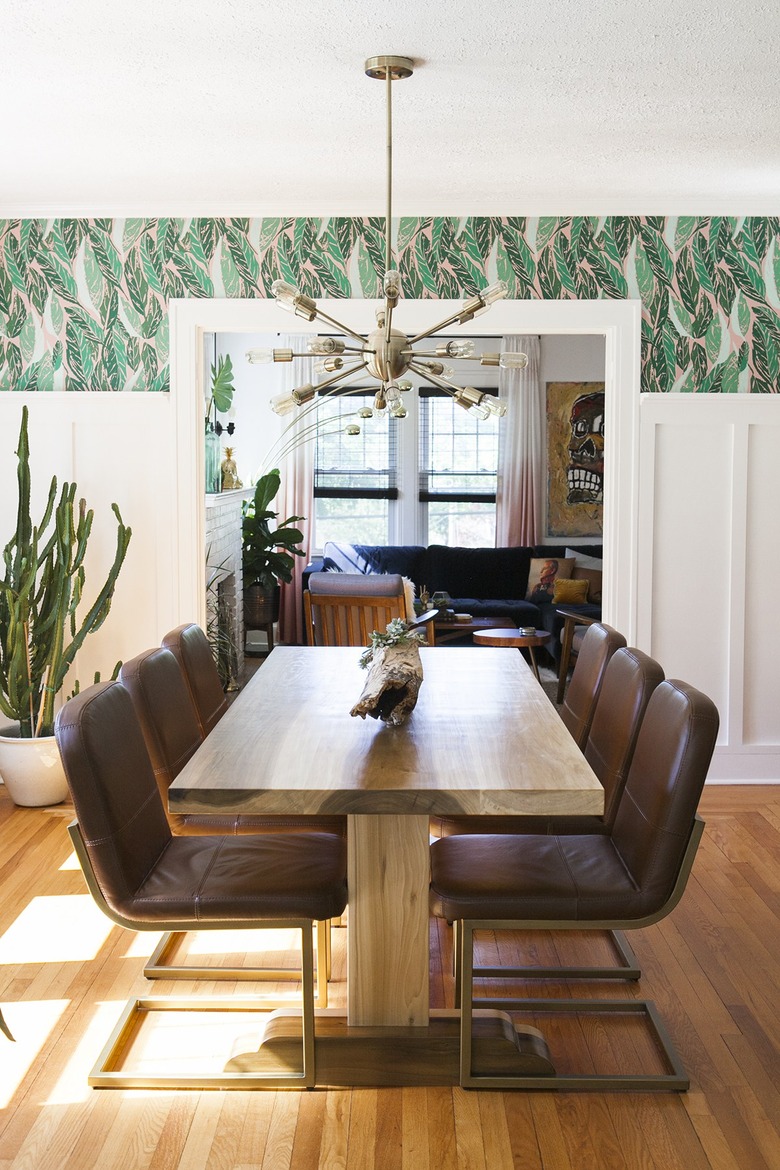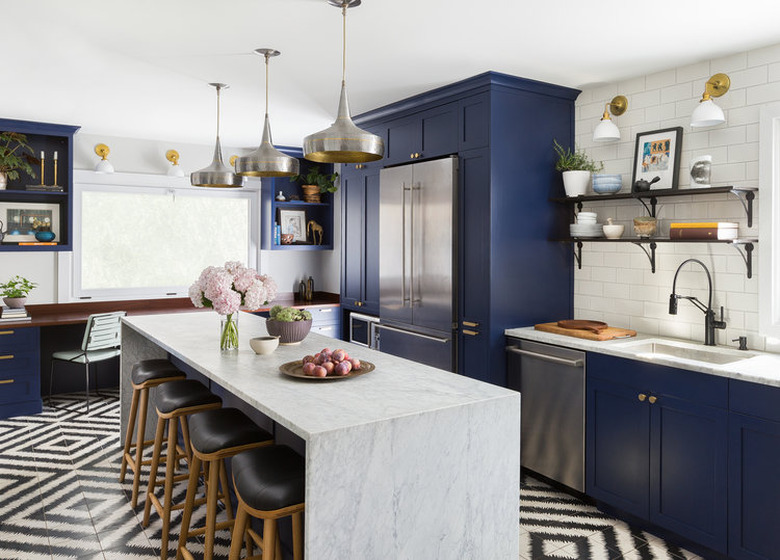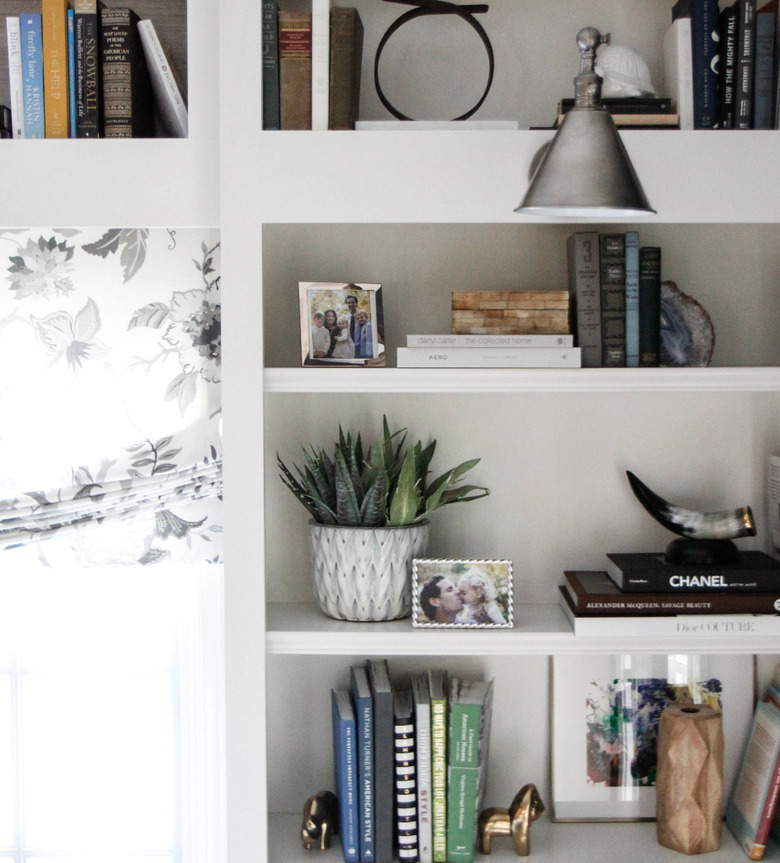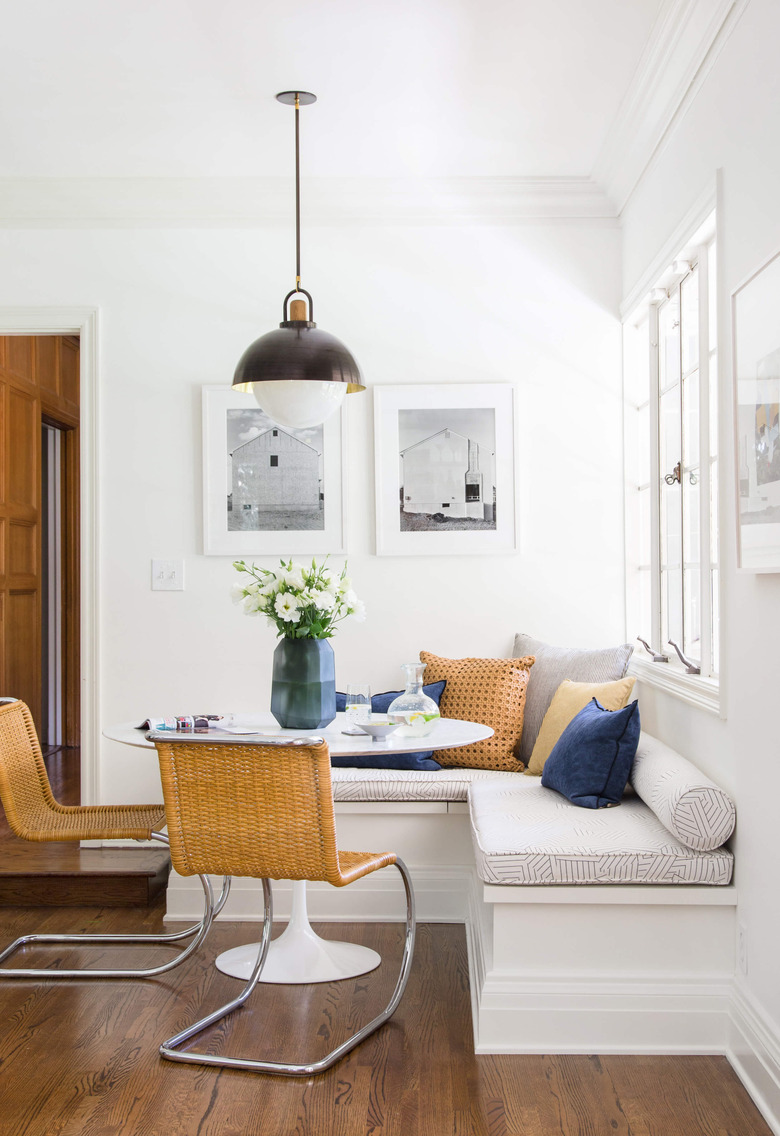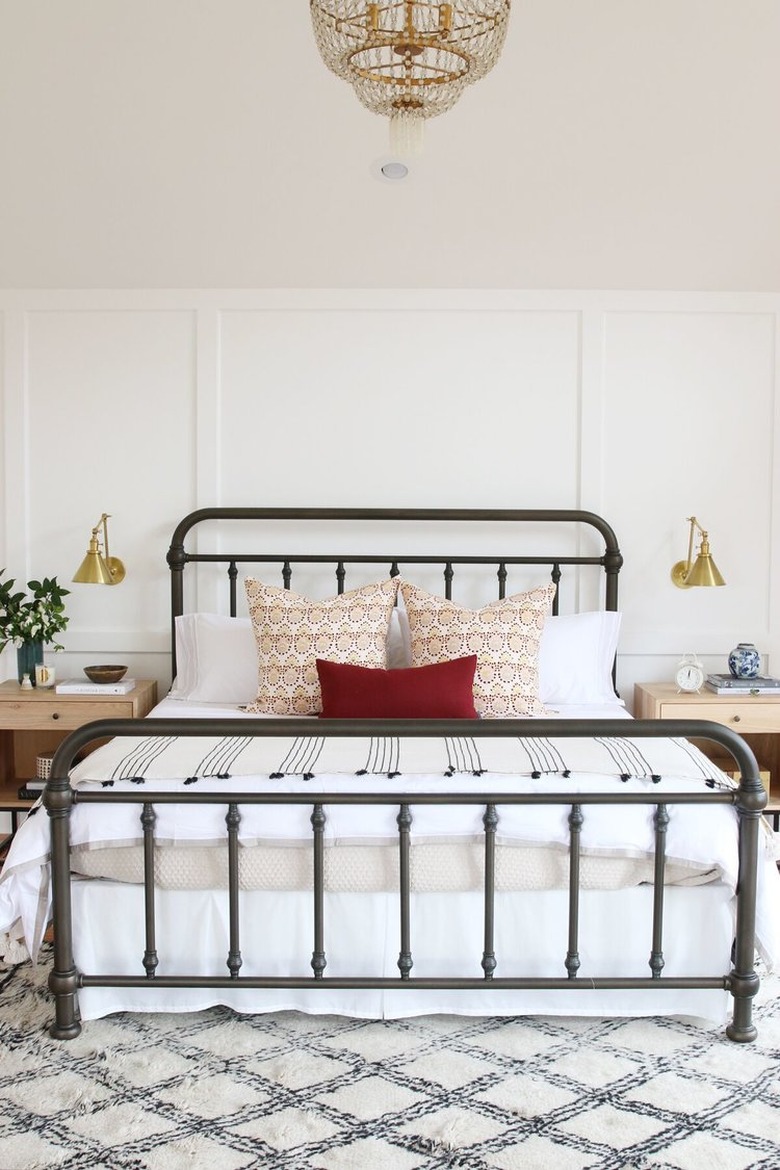Mixing Metals In Home Decor: 7 Rules And Tips
We may receive a commission on purchases made from links.
A few metallic accents can really wake up a decor scheme, but more traditional design trends tend to lean toward sticking to one metal finish throughout. Is this a rule that can be broken? We say yes! After all, with so many pretty metal finishes to choose from, how could you possibly commit to just one? That's one of the reasons that mixing and matching lustrous sheens has become so popular as of late. While approaching this look might cause some homeowners to panic, it's actually easier to pull off than you might think.
First of all, it's important to know all of your options, including the different types of metals and the variety of finishes that are available. Once you have a handle on the basics, navigating these murky waters becomes a little easier, especially since we've pulled together some helpful ways to integrate the ultra-cool mashup into your own home.
Types of Metals and Metal Finishes
Types of Metals and Metal Finishes
In the world of interior design, there are six types of metal that tend to be used the most. They include aluminum, brass, stainless steel, copper, bronze, and wrought iron. Additionally, there are different finishes that make them stand out from one another even more. A few of the most popular go-tos are matte, polished, antiqued, brushed, hammered, oil-rubbed, and satin.
Basically, metals are broken down into two types: ferrous and nonferrous. The word "ferrous" comes from the Latin word "ferrum," which means "containing iron." The most common ferrous metals are wrought iron, cast iron, and solid steel. They are very heavy and solid metals that aren't porous but are magnetic. Wrought iron in particular is an iron-based metal that is heated and hammered into shapes and is used frequently in decor.
Nonferrous metals are things like copper, brass, aluminum, nickel, and stainless steel. These kinds of metals are easier to work with in fabrication because they are more malleable. To go even deeper, some nonferrous varieties are the result of mixing two metals. For example, copper mixed with zinc creates brass. As a ferrous metal, solid wrought iron is not used for faucets or pipes because the material tends to be too solid, but it makes for great chandeliers, drawer pulls, and stair railings.
It's easy to get overwhelmed and just lock into using one finish throughout, but try not to get too invested in being matchy-matchy. An aluminum pendant light can have a hammered or a polished chrome finish, while your kitchen drawer handles can be a satin or brushed nickel. Maybe you have antique brass sconces that flank a mantel but want to hang an oil-rubbed, bronze chandelier in the same room. Cool metals tend to work better in kitchens or bathrooms. Black, gold, and warm metals work nicely in living and dining rooms as well as kitchens and baths.
Here is a helpful breakdown of what to know when considering different metals and metal finishes.
Types of Metal
- Wrought iron is extremely strong and durable but is prone to rusting. Maintain it with a rust protectant, especially if it is exposed to moisture. This metal looks great in Spanish-, traditional-, and rustic-style homes for light fixtures, knobs and pulls, stair railings, and even curtain rods.
- Stainless steel is durable and will not rust or corrode. It's easy to maintain, but it's expensive. This metal is great for kitchens in just about any style of home. For sinks, countertops, and appliances, stainless steel is a go-to.
- Bronze has a unique appearance and is long-lasting when cared for. However, it is very expensive, and if used as a faucet or sink, it needs to be wiped down immediately after use, or the surface can be damaged. Bronze has an old-world feel that looks stunning in traditional, rustic, or farmhouse interiors.
- Brass is relatively low maintenance and durable. It can tarnish if not cleaned properly over time. Brass has become a favorite in modern decor but also works in more traditional spaces as well. A brass faucet in a kitchen or bathroom will instantly elevate the look.
- Copper is distinctive and has a luxe look. However, it is expensive and must be treated with a gentle wax (like beeswax) to prevent oxidation or patina. Depending on the finish, it will work beautifully in rustic or modern homes.
- Aluminum is lightweight, rust-resistant, easy to maintain, and inexpensive, but it may oxidize over time if not washed regularly with soap and water. Brushed aluminum is a great go-to for pendant lampshades in modern decor.
- Chrome is actually not a type of metal but rather a layer of electroplated chromium over another material, such as steel. However, it is quite popular due to the fact that it is low maintenance and has a sleek appearance. Ideally, the base material is copper, brass, or steel, so it lasts longer.
- Nickel, like chrome, is also used for plating and has a similar silver color, but it is more expensive. It has a warmer feel than chrome, and its surface can better conceal fingerprints. Nickel plating will last longer over quality base metals, like copper, brass, or steel.
Types of Metal Finishes
- Matte finishes are flat and have no shine or reflection.
- Oil-rubbed finishes are more common on metals like copper, brass, and bronze. The look tends to mimic an aged or patinaed metal. It can be a time-intensive finish to achieve, which is reflected in the price.
- Brushed finishes look like they have a slight texture on the surface of the metal to make it less shiny. It's a good way to hide fingerprints and smudges.
- Hammered finishes are just that. They have an irregular, worn appearance.
- Polished finishes, whether chrome, brass, or nickel, offer a super-sleek surface. However, the finish requires constant buffing to maintain its luster.
- Satin finishes are halfway between brushed and polished. They don't have the lines of brushed metal and are less shiny than polished. On the plus side, satin finishes hide fingerprints and water spots. However, they tend to be more expensive.
Take some time to explore different metals and finishes to see how you can mix them together to create a unique design story for your home.
Rules and Tips for Mixing Metals
Rules and Tips for Mixing Metals
Now that we've reviewed the brass tacks (see what we did there?), how do you go about mixing metal finishes?
Start by selecting a dominant metal — something that will anchor the design. Then, sparingly sprinkle two to three different metals or finishes into the mix. Keep in mind that you can also stick to all silver or gold tones and just change up the finishes.
To help make your decision, consider your color palette. If the room has warm paint colors, then stick to warmer metals, like brass, nickel, or copper. Cooler tones look nice with wrought iron or stainless steel. White and black hues work well with either. Try to balance warm- and cool-toned metals. For instance, consider introducing small touches of copper where stainless steel is your dominant metal. Cabinet hardware is a great place to work in a new metal. Try brass drawer pulls with a matte black showerhead. Mix up your finishes. Don't stick to all polished or matte. Polished chrome faucets would look great with hammered copper pendants.
Hungry for more? Here are seven design tips to help you nail the mixed metal look, from doorknobs and lighting to plumbing fixtures and mirrors.
1. Play up the contrast.
Emphasize mixed-metal pieces by playing up their differences. In this California home designed by architect Eric Aust, the sleek gold light fixture balances the industrial metal chairs, keeping the design from looking too rustic. Use different metal finishes to balance your space. Instead of going with all polished brass in your bathroom, mix in some brushed or matte accents.
2. Don't go overboard.
To keep your space looking chic and not chaotic, limit yourself to mixing only two to three different metal finishes in one space. Any more than that could make your design feel disconnected. The eclectic living room in this Amsterdam home spotted on Coco Kelly beautifully blends a handful of metal finishes using key pieces, like the ornate gold-framed mirror above the fireplace, the black steel frame coffee table, and a chrome floor lamp. By the way, a mirror is an excellent way to reflect the different metal surfaces even more.
3. Space out your metal finishes.
If you want to truly nail this trend, be sure to spread it out. This dining room by Jessica Brigham includes a silvery midcentury pendant light and dining chairs with brass legs. Together, this mix displays the perfect example of how working metal accents into your design from top to bottom can really help tie a look together.
4. Anchor your design with a mixed-metal accent.
In this Seattle kitchen by Brio Interior Design, the brass wall sconces and stainless steel appliances are far from out of place thanks to the pendants hanging above the island. The lighting trio showcases a brass and chrome combo that sets the stage for using the two finishes throughout the rest of the space.
5. Mix finishes to create texture.
Add interest and texture to your home decor by pairing a brushed metal item, like the wall sconce in this vignette by Park & Oak, near something more polished and reflective, such as the brass bookends. This idea works especially well on open shelving. Search vintage shops and flea markets for different vessels, like copper pots or tin vases, to add small metal accents that contrast with other finishes in the room.
6. Introduce a new finish with lighting.
Light fixtures are an excellent way to introduce something unexpected to your decor. Since ceiling-mounted light fixtures are visually separate from the rest of the room, they are an easy way to bring a new finish into your space without messing up the overall design scheme. In this breakfast nook by Emily Henderson, the darker tone of the oil-brushed bronze pendant draws the eye up since it's a heavier-looking metal than the steel chair legs.
7. Use wrought iron as a neutral.
The soft black finish of wrought iron isn't nearly as eye-catching as gold or silver. In fact, it's so understated that you can think of it as a neutral — so, you don't have to worry about what other metal finish you want to pair with it. That's why the brass wall sconces and ceiling fixture in this bedroom design from Studio McGee look so good next to the wrought iron bed frame.
